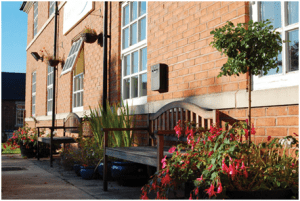Recent news and updates
Guest Blog: How to Choose the Perfect Wheelchair Cushion?
Let’s face it: There’s no one size for all when it comes to wheelchair cushions.
Therefore, it’s risky buying a wheelchair cushion without pre-evaluation since this might result in serious injuries. Wait a minute? Is it that important getting the right wheelchair cushion?
Prolonged wheelchair usage can result in a variety of infections, pressure points pains, and muscle misalignment such as shoulder tendon tears. According to a research published by the Agency for Healthcare Research and Quality (AHRQ), over 2.5 million people in wheelchairs in the United States, develop pressure ulcers, which are one out of many defects faced.
Therefore, to help you make the right choice, we’ve prepared the features and specifics that you need to look for when choosing the right wheelchair cushion. Without much ado, follow us on this immersive journey.
Factors to Consider Before Selecting a Wheelchair Cushion
As mentioned earlier, there’s no “all for one” type of cushion. Rather, you have to find the one that suits you or your patients’ needs. So, consider the needs before choosing a cushion:
Weight: The weight of the user is an important factor to consider. The right cushion must support the weight capacity of the user without losing its shape.
Height: consider the height of your patient before choosing a cushion. Ensure that the cushion is not so thick that the user’s feet doesn’t touch the ground.
Mobility: know the extent of the patient’s use of the wheelchair. Whether the user will sit for prolonged periods or move in and out of the wheelchair periodically, it’s vital to take this into consideration.
Skin condition: skin conditions also have an underlying role in the type of cushion to choose. Consider the skin condition of the user before choosing a cushion.
This settled, let’s explore the specifics you need to look for in wheelchair cushions.
Related Information – wheelchairs in singapore
What to Look For In Wheelchair Cushions
Select the Right Cushion Material
There are a myriad of cushion materials available for wheelchair users – air cells, foams, gels, and even hybrid combinations. To avoid health complications and discomfort, you need to select the right cushion material based on the aforementioned factors.
For instance, lightweight, spongy cushions are great to reduce the strain on the pressure points. More so, they are ideal for those without skin conditions. Since this type of cushion material come in various shapes and sizes, users can pick which suits their needs.
Latex foam wheelchair cushions, on the other hand, have an elastic build that allows it to mold to the user’s body. Since this material doesn’t absorb moisture, it’s resistant to mildew, bacteria presence, and mold. No doubt, latex foam cushions are great for those with a mild inability to retain bodily fluids.
Memory foam cushions offer optimum comfort to users with a higher risk of getting pressure injuries. Just as the name implies, it molds perfectly to your body shape. More so, it can retain its depressed shape longer, thereby, relieving the pain on your pressure points.
Gel Cushions. These type of cushions are produced from plastic polymers which mimic the protective fatty tissues of the buttocks. Patients with sensitive skin conditions will be most comfortable with this TPE type of cushion. With gel cushion, there’s minimal friction between the user’s skin and the cushion surface. In addition to this, gel cushion comes in various forms such as checkered board surface or honeycomb surface.
Although a bit higher priced than the rest, Air-filled Cellular cushions are a great option for those who desire optimum pressure pain relief. What’s interesting about this device is that users can control and monitor the amount of air that goes into the device. Due to this function, wheelchair users can correct their postures, and at the same, prevent pressure points.
Lastly, the Honeycomb cushion, with its specially crafted spongy surface, is fast becoming popular. Manufactured from Thermoplastic urethane (TPU), this device is ideal for users with pressure management needs. Just like a honeycomb, it constitutes of several small cells arranged in a beehive manner. Not only does this evenly distribute weight, but it also supports the user’s weight without losing memory. Unlike air-filled cushions, this doesn’t transfer pressure point from one side of the cushion to other areas.
Cushion Format
Irrespective of your cushion material, the cushion format is also an important feature to consider. So, talk to your rehab specialist or doctor on the best cushion format for your wheelchair. From the saddle cushion, which helps to keep your knees together to the waffle-shaped cushion which protects your skin and allows air to flow freely, there’s no end to your options as a wheelchair user.
Wrapping Up
Finally! As you can see, choosing the right wheelchair cushion is no small feat. Therefore, consider the aforementioned features and get optimum relief from wheelchair-associated infections and conditions.
Also read about 5 Pieces of Technology Seniors Need



